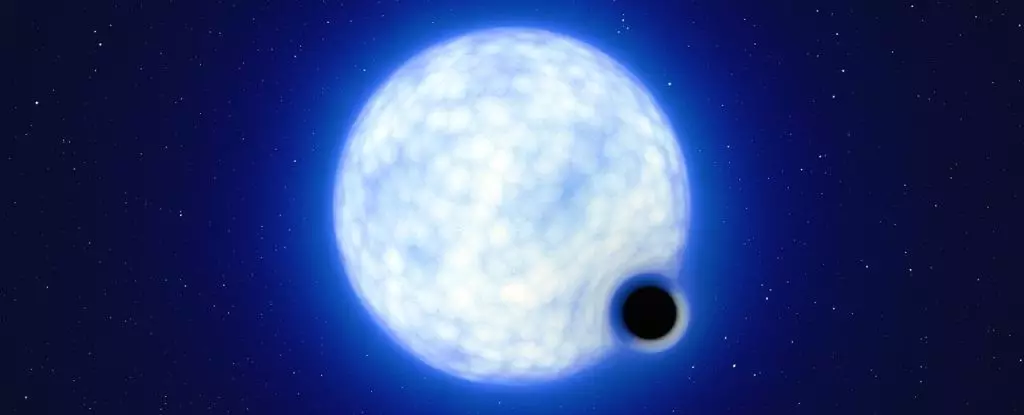When massive stars meet their demise, they typically go out with a bang, resulting in a dazzling supernova display. However, recent studies have brought to light a puzzling phenomenon where some massive stars seem to vanish without a trace, defying our expectations. These stars, once visible in the night sky, have inexplicably disappeared, leaving astronomers perplexed as to their fate.
A groundbreaking study led by astrophysicist Alejandro Vigna-Gómez of the Niels Bohr Institute and the Max Planck Institute for Astrophysics has shed light on this mysterious vanishing act of massive stars. The study focuses on a binary system named VFTS 243 in the Large Magellanic Cloud, comprising a black hole and a companion star. Contrary to expectations, this system shows no signs of a supernova explosion accompanying the formation of the black hole, suggesting a different fate for some massive stars.
The study proposes a new theory that some massive stars may undergo a quiet demise, collapsing into black holes without the explosive supernova event typically associated with such events. This hypothesis challenges conventional models of stellar evolution and offers a compelling explanation for the sudden disappearance of bright stars observed in recent times. Vigna-Gómez describes this process as akin to watching a star extinguish and vanish from the heavens without a trace, leaving astronomers baffled by the lack of a dramatic supernova display.
When a star more massive than 8 times the Sun goes supernova, it results in a messy explosion where the outer layers are violently ejected into space, forming a cloud of dust and gas. The star’s core collapses under gravity to form a neutron star or a black hole, depending on its mass. Despite the chaotic nature of supernova events, some stars seem to forego this explosive end, collapsing directly into black holes without the dramatic fireworks typically associated with their demise.
VFTS 243 stands out as a remarkable system that challenges our understanding of stellar evolution. Comprising a massive star and a black hole, this binary system exhibits characteristics that suggest a direct collapse scenario, bypassing the conventional supernova stage. The almost circular orbit of the black hole, coupled with its stable motion in space, indicates that it did not receive a significant kick from a supernova explosion, reinforcing the theory of direct collapse into black holes for some massive stars.
The findings from VFTS 243 and similar studies present a paradigm shift in our understanding of the life cycle of massive stars. The possibility of stars collapsing directly into black holes challenges existing models and prompts a reevaluation of stellar evolution theories. Further research in this field is crucial to unraveling the mysteries of the cosmos and shedding light on the fate of massive stars that vanish without a trace. As we delve deeper into the enigmatic realm of astrophysics, more surprises and revelations await, shaping our understanding of the Universe and its celestial inhabitants.


Leave a Reply